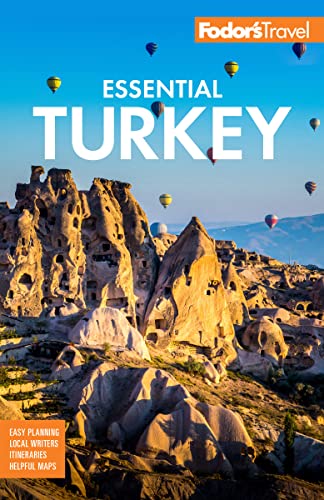Pamukkale (pronounced pam-ook-ka-lay), which means "cotton castle" in Turkish, first appears as an enormous, chalky white cliff rising 330 feet from the plains. Mineral-rich volcanic spring water cascades over basins and natural terraces, crystallizing into travertines—white curtains of what looks like solidified white water, seemingly suspended in air. The hot springs at Pamukkale are believed to cure rheumatism and other ailments and have attracted visitors for millennia, as illustrated by the ruins of the Roman spa city of Hierapolis, whose well-preserved theater and necropolis lie within sight of Pamukkale.
In the mid-1990s, the diversion of water from the springs to fill thermal pools in nearby luxury hotels in the adjacent spa village of Karahay?t reduced the volume of water reaching Pamukkale. This, combined with a huge increase in the number of visitors, discolored the water's once-pristine whiteness. As a result, wearing shoes in the water is prohibited to protect the deposits, and the travertines can only be entered from designated areas. Although Pamukkale is not quite as dramatic as it once was, for first-time visitors the white cliffs are still an impressive sight. Parts of the site are now blocked off, as the authorities strive to conserve and restore a striking natural wonder to its former magnificence. However, you can still venture down the white cliffs and soak in the water: the rock can be prickly and slippery by turns, so remember to watch your step, no matter how enthralled you are.
If you have time, spend the night in Pamukkale, as the one-day bus tours from the coast are exhausting and limiting: you'll end up spending more time on the bus than you do at the actual site. A full day at Pamukkale will give you enough time to enjoy the water and the ruins. The site is large, but you can easily navigate it without a guide, if you want the freedom to swim, wade, and explore at your own pace. If you have more time, the area around Pamukkale is dotted with interesting geological formations and archaeological sites, including the nearby ruins of Laodicea and Tripolis; the "crying rock waterfall"(A?layan Kaya ?elalesi) near the town of Irl?ganl? (about 40 km [25 miles] away); and the springs of Karahay?t. It also makes a good base for a visit to Aphrodisias.





